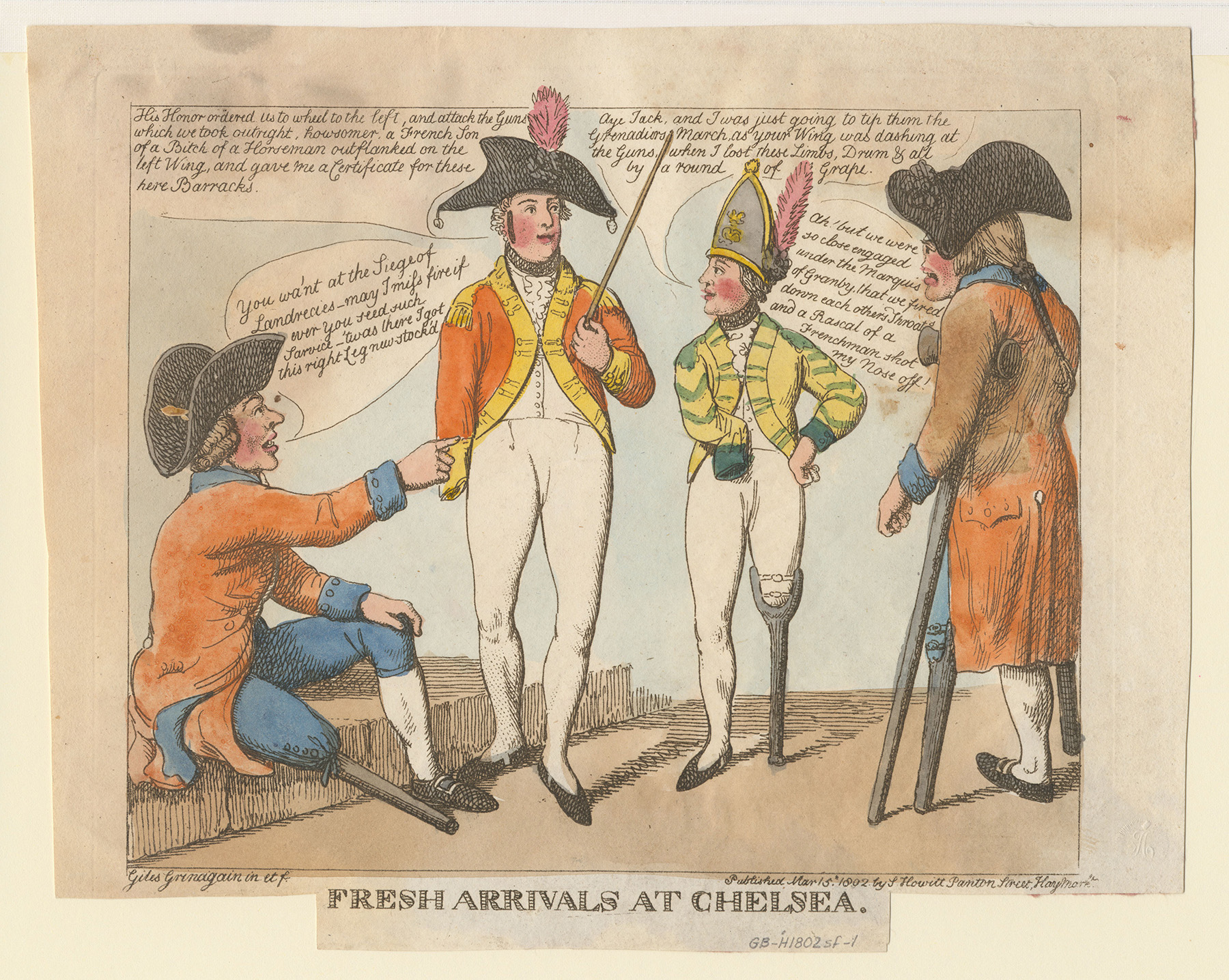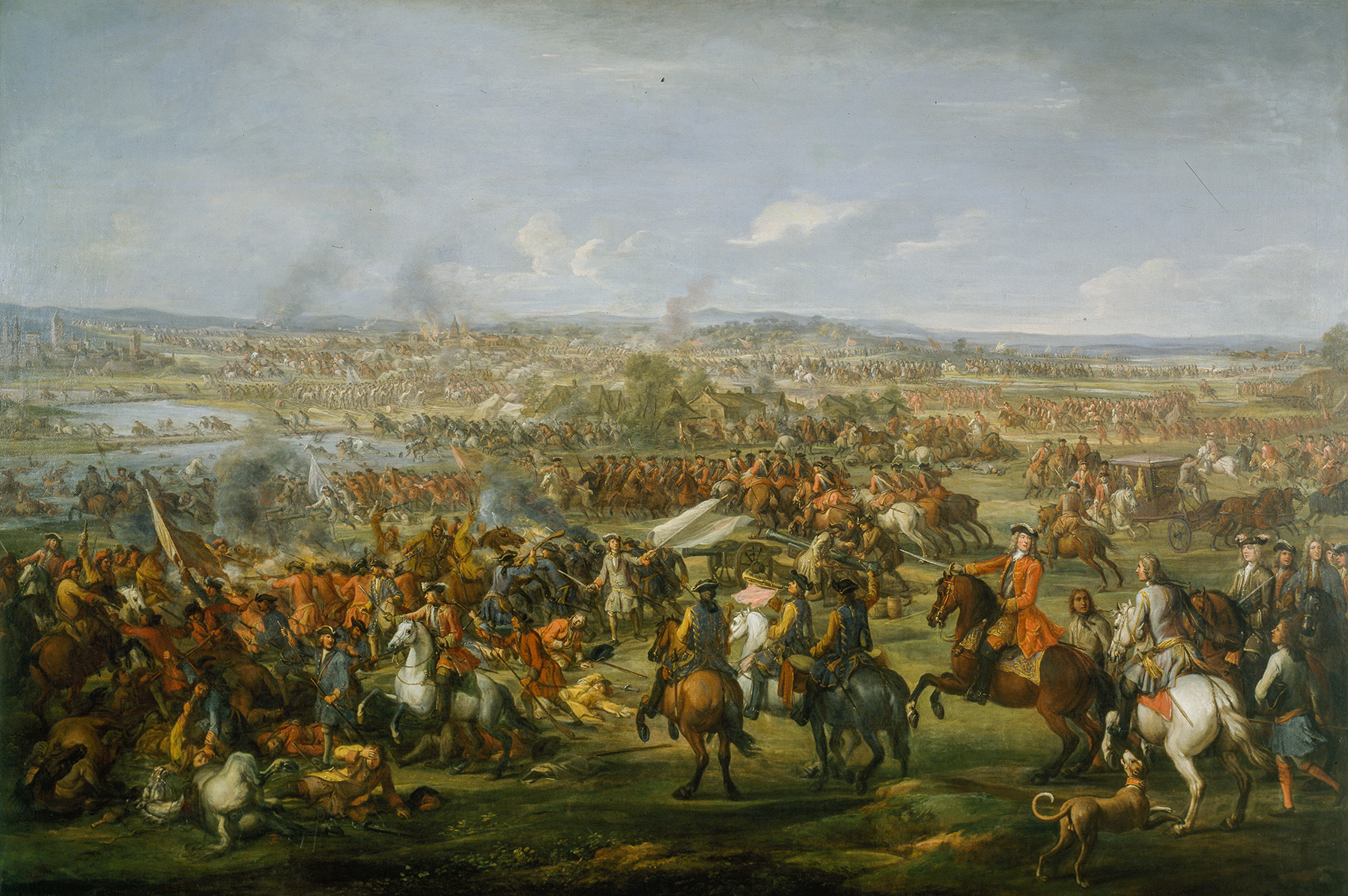Wounded and worn out
The Chelsea Pensioners admitted to the Royal Hospital Chelsea were ‘broken by age and war’ and no longer fit for the battlefield.
The demographic of the Royal Hospital’s first residents was very different from today’s Chelsea Pensioner community. Records show there was a wide age range, with veterans as young as 19 years living alongside those in their 90s. It is recorded that of the first 99 veterans admitted on the 4th February 1692, one was blind, three had lost an arm, seven a leg, and one both legs. The remainder had all been severely wounded and were mostly lame or paralysed, and 25 were admitted direct to the Infirmary.

A caricature of wounded veterans, new arrivals at the Royal Hospital, describing the battles where they lost their limbs.
Wren’s Infirmary had accommodation for nurses, eight rooms with 32 beds for patients and ‘cradle bedsteads’ for emergencies. A bathing tub was acquired in 1732 and a ‘Swetting chair and Wanscot Bathing Tub’ followed seven years later. In 1773, the latest novelty, a bath with hot and cold water, was installed in the basement at a cost of £40.
The surgery was equipped with bottles, funnels, sieves, chafing dishes, bleeding porringers and a dissecting table for operations.
The Infirmary was designed for the ordinary requirements of the Hospital. However, during times of war, it was made to serve as a base hospital, a purpose for which it was quite inadequate. For example, on the 17th March 1705 the Hospital was instructed to quarter ‘near 300 invalids’ returning from the Battle of Blenheim in Germany ‘at Chelsea and places adjacent’. After inspecting the casualties, ’41 of them whose wounds were running’ were admitted to the Infirmary. The Surgeon was also required to dress the wounds daily of those billeted elsewhere in the area.

A strain on Wren’s Infirmary
In 1794, Thomas Keate, the Hospital’s surgeon, became concerned that 1,900 sick and wounded soldiers were being evacuated (probably from the ongoing French Revolutionary War). He suggested to the Secretary at War that the 50 worst surgical cases should be placed in the Infirmary, with 150 others in ‘outhouses’ and in field hospital tents to be erected in the Hospital grounds. In the end, 56 beds were packed into the Infirmary, the Adjutant’s apartments and former Matron’s Ward over the Great Hall.
This burden on the Hospital during times of war placed strain on the Infirmary’s facilities. By 1809, plans were being prepared for a new Infirmary that could better withstand these pressures.